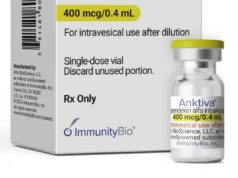 The delivery of healthcare requires a complex system in which providers interact with patients, technology, equipment, and the physical environment. These interactions are strongly linked to patient and employee safety.
The delivery of healthcare requires a complex system in which providers interact with patients, technology, equipment, and the physical environment. These interactions are strongly linked to patient and employee safety.
In planning for a new healthcare facility, decisions made during the planning process, such as layouts or placement of supplies and fixtures, can have unintentional and significant downstream effects that may lead to hospital-acquired conditions, medical errors, adverse events, system deficiencies, compromised employee safety, and poor job satisfaction. These weaknesses, or “accidents waiting to happen,” are known as latent safety threats (LSTs).
Some common design elements and associated LSTs include location of equipment or supply areas leading to inefficient workflows that cause staff fatigue or delay patient care; noise reduction strategies that impact team communication; inaccessible mounting of equipment (diagnostic sets, thermometers, blood pressure cuffs) that causes providers to overreach or stretch while providing patient care; and confusing wayfinding signage that causes a negative patient or family experience.
LSTs may contribute to adverse events if not remediated proactively, but they can be difficult to detect because the planning process requires clinical leaders to imagine how work will be done prior to a new facility opening. This process has many limitations, as teams can’t completely predict the complexity of delivering patient care. Upon a facility opening, work as imagined by the planning team is often not an accurate reflection of work as it’s actually done.
One strategy to identify and remediate LSTs in a facility post-construction and pre-occupancy is Simulation-based Clinical Systems Testing (SbCST). This step allows clinicians and clinical leaders to witness care delivery through simulations and then evaluate spatial layout, location of fixture placement, gaps in care processes, care team communication, and accessibility of supplies. It helps to unmask safety threats, inefficiencies in workflow, or gaps in planned processes that would otherwise go unrecognized prior to facility opening.
Test Preparation
Children’s Healthcare of Atlanta implemented SbCST at 15 clinics within its Center for Advanced Pediatrics in Atlanta, a tertiary outpatient pediatric subspecialty center. The process for one of those clinics, the pediatric allergy clinic, required a collaborative approach that included clinic stakeholders (administrative, operational, and clinical leaders; educators; nursing and physician division directors), frontline staff (physicians, nurses, and medical assistants), and simulationists (clinicians within the healthcare institution who deliver simulation-based programs).
Three months prior to testing, members of the simulation team met with administrative leaders from the allergy clinic to identify routine episodes of care and potential emergency situations. Concerns related to the new clinic’s physical layout, processes and procedures, new technologies, and supply and equipment storage were identified.
From this information, the simulation team outlined the clinical context for testing, and two clinical scenarios were created: (1) a routine visit for allergy testing where the patient developed anaphylaxis but recovered and (2) an emergency event where the patient developed anaphylaxis and required treatment and transfer to the hospital. Process maps were created in order to detail how the patient would flow through the clinic; tasks that would be conducted during these care episodes; all necessary equipment, supplies, and medications needed; and specific roles of each team member.
The process map ensured that scenarios met specific testing objectives such as evaluation of overall design, patient safety, infection control, workflow efficiency, and patient and family experience. For example, clinicians evaluated the overall design of the patient exam room, accessibility of fixed design elements such as the sharps container (staff safety), location of hand foam (infection control), use of tracking board technology (workflow efficiency), location of code carts, and the process related to the management of anaphylaxis (patient safety).
A one-day test was conducted in September 2018, a month prior to the clinic opening, and included clinicians who would be transitioning into the new space and stakeholders from the collaborative working group to observe the simulations. Each scenario lasted 20 minutes and was followed by an immediate debriefing to conduct the risk assessment where teams could identify workflow inefficiencies, threats to patient or staff safety, accessibility to emergency supplies, functionality of fixture placement, adaptability to varying patient care needs, or gaps in process.
Multiple LSTs related to fixture placement were identified during the routine allergy visit scenario. For example, the sharps container was too close to the patient exam table, putting patients at risk if they stuck their hands in the box. The mounted otoscope was centered above the patient exam table and difficult for providers to reach. The lack of a hand foam dispenser outside each patient exam room didn’t support hand hygiene compliance. Clinicians also noted the wayfinding signage was confusing for parents who were trying to exit the clinic.
In the second scenario, clinicians identified a lack of knowledge regarding what supplies were stored in the code cart, inconsistent use of tracking boards that made it difficult for team members to know where a physician was during an emergency, and a gap in knowledge regarding the role of the emergency response team in management of a patient with anaphylaxis.
Following SbCST, a report was provided to the clinic’s leaders within 24 hours. Administrative and operational leaders then identified which LSTs required immediate corrective action prior to the clinic opening and which LSTs could be rectified at a later point. Multiple opportunities for improvement were identified, including repositioning of the sharps container in each exam room, addition of hand foam to the outside of each clinic room, and updated signage to clarify clinic exit doors.
Transition planning also included additional education on the location and availability of emergency supplies, physician training on the use of electronic tracking boards, and simulation training for the emergency response team. Application of SbCST prior to the opening of the Center for Advanced Pediatrics helped to ensure operational readiness and ease transitioning by promoting preparedness and training of the staff.
Planning Success
Project teams looking to conduct SbCST should incorporate the process into the project timeline from the onset of any new construction or renovation planning (ideally, six to eight months prior to opening). This will ensure there’s enough time to engage stakeholders, perform a needs assessment, and conduct simulations. The facility should be operationally ready for simulations with equipment and supplies stocked where appropriate, to increase the fidelity of simulations and allow clinical teams to effectively and accurately test the system and processes.
Project teams should also allot two to three months between simulation and facility opening so that solutions to LSTs can be devised and implemented prior to opening. This timeframe also allows for a second round of SbCST so that clinical teams can repeat the scenarios to validate solutions or process changes, as well as test design alternatives.
SbCST can be applied to any new clinical space to evaluate the built environment to identify latent conditions, optimize the environment and care process, and improve healthcare outcomes. Integration of SbCST into the pre-occupancy evaluation process places safety at the forefront of planning and has the potential to impact how healthcare facilities are built and tested in the future.
Dr. Nora Colman is an associate professor in the Department of Pediatrics, Division of Critical Care at Children’s Healthcare of Atlanta (Atlanta). She can be reached at nora.colman@choa.org. Dr. Kiran Hebbar is an assistant professor in the Department of Pediatrics, Division of Critical Care, and Medical Director of the Simulation Center at Children’s Healthcare of Atlanta. He can be reached at kiran.hebbar@choa.org.
HCD Expo: The authors spoke on this topic at the 2019 Healthcare Design Expo & Conference in New Orleans in November. Watch for more coverage of the event at HCDmagazine.com and learn more about the 2020 show at HCDexpo.com.








